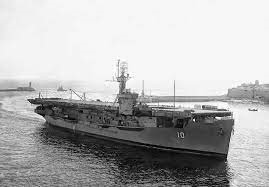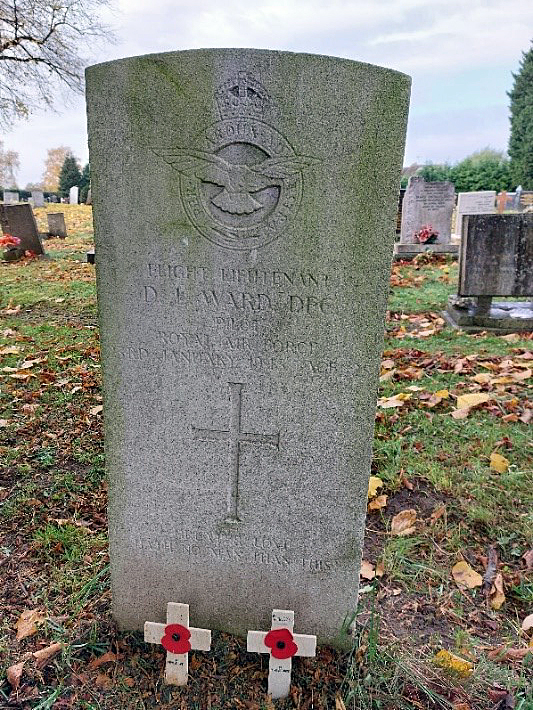CovSoc member Tony Auty writes ….
Following on from Peter Hunter’s article last month regarding Walsgrave Cemetery I thought you may be interested to learn more about the two war graves that are in that cemetery.
The first headstone commemorates Frederick Thomas Brown, a Leading Patrolman, in the Royal Navy, who died aged 29 in 1947. He served on HMS Rajah, which was an escort carrier built in the USA and commissioned into the Royal Navy in 1944. It transported aircraft and aircrew from the USA to England and then operated as a deck landing training carrier being visited by a verity of aircraft. Later the ship transported aircraft to the far east and after the war caried troops back from the Far East to Commonwealth countries and was eventually returned to the US Navy in December 1946.


The second commemorates Donald Leslie Ward DFC, a pilot in the RAF Volunteer Reserve, who died aged 25 on 23/1/45 in a mid-air collision between two mosquitos on a training flight over Cambridge. Both pilots and navigators died in the incident. He had been awarded the DFC in 1944, the citation reads ‘This officer has displayed a high standard of skill and efficiency. He has completed very many sorties and has at all times pressed home his attacks with great determination. He has destroyed three enemy aircraft and nine flying bombs.’

CWGC headstones follow the same design and display the similar information. irrespective of rank, service, nationality etc. They are typically made of Portland stone, but other types of material are used e.g. slate, botticino marble, granite.
I am a volunteer with the Commonwealth War Graves Commission and monitor the condition of war graves at several sites in Coventry and Warwickshire. This involves a biannual inspection, cleaning where necessary and reporting any issues to the Commission for repairs to be carried out.
The CWGC cares for 23,000 war memorials and war cemeteries around the world commemorating 1.7 million Commonwealth casualties. In the UK there are over 306,000 commemorations at over 13,000 locations. The work covers our distinctive headstones, the buildings and monuments associated with them and in some locations the detailed horticultural work to the grounds they stand in. Its mission is to ensure those who died in service, or as a result of conflict, are commemorated so that they, and the human cost of war, are remembered for ever.
For more information on the work of the CWGC visit https://www.cwgc.org/
Tony Auty
